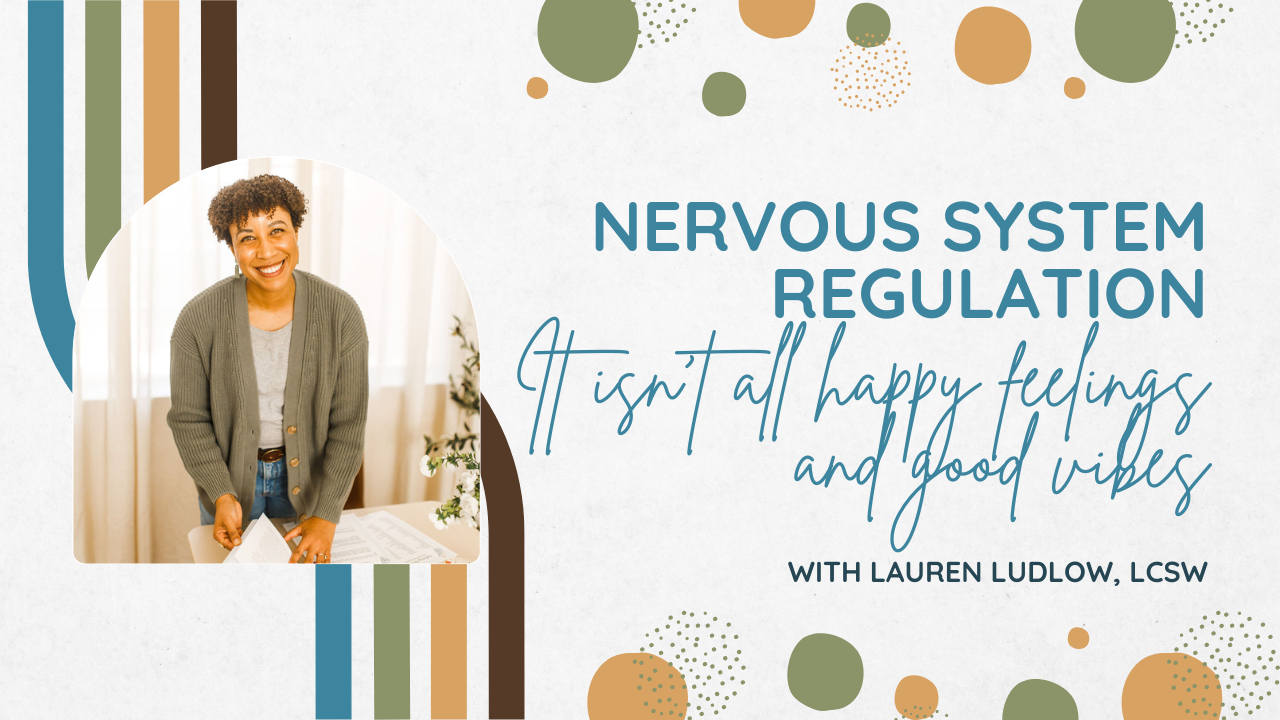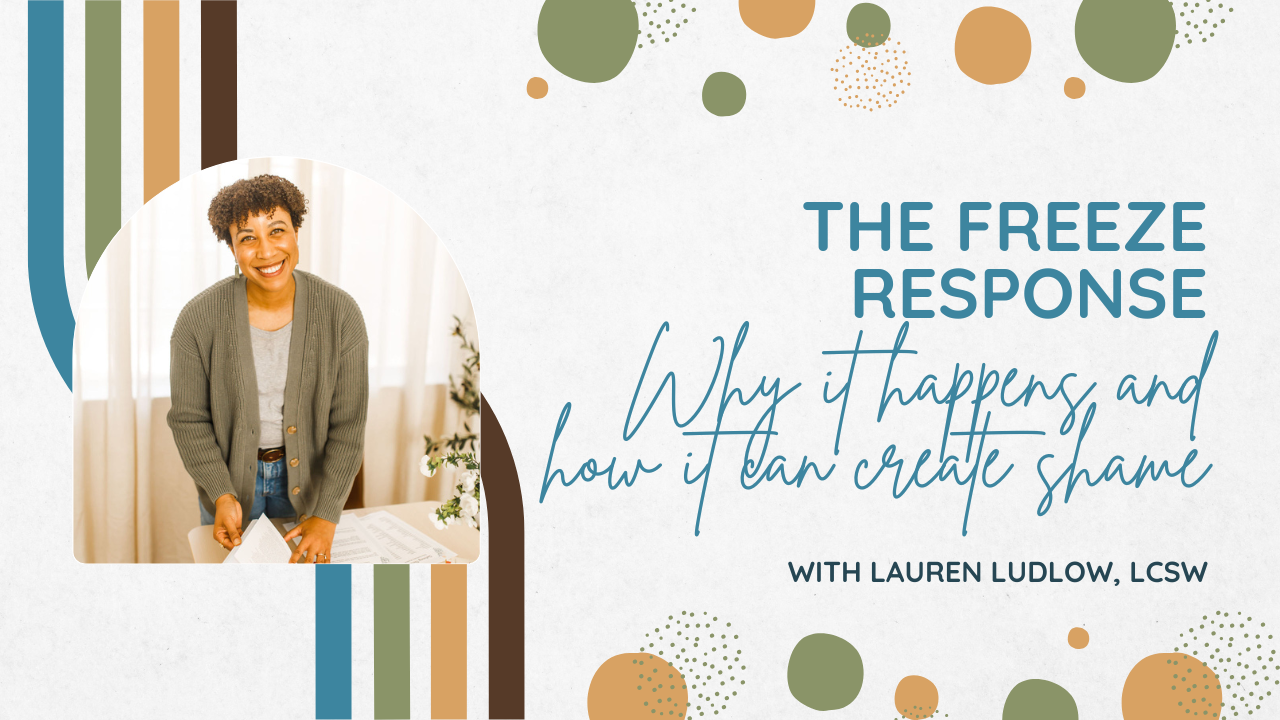

Demystifying EMDR: What is This Form of Therapy All About?
Who does EMDR work for? What is it good for? How exactly can it help you heal?

What Is Co-Regulation? Why It Matters for Your Relationship
If you are feeling more and more distance and loss of intimacy in your relationship the challenge (and the solution) may be co-regulation.

How to Recognize Emotional Safety (or the Lack of It) in a Relationship and How A Couples Therapy Intensive Can Help
Emotional safety is the foundation of a thriving relationship but if your relationship is going through challenges or you don’t have vast experience with healthy relationships it can be hard to know what emotional safety is. This post provides some tangible signs of emotional safety in relationships.

Healing from a Traumatic Birth As a Trauma Therapist: What the Hospital Taught Me About Getting Through
What does it take to actually make it through a traumatic experience or an intense adverse experiences? The practices that help you to get through are often different than the ones that will get you on the road to healing because the purpose of them is to help you make it to the next step or more security and stability. Learn more in this post.

Signs of Stored Trauma in the Body
Trauma, adverse experiences, and distressing emotions do not just live in the mind but in the body. These are some ways that trauma stored in the body can present itself.

Healing in Fast Forward: How EMDR and Somatic Therapy Intensives Can Help You Heal and Befriend Your Nervous System in Lasting Ways and Less Time
Video Blog: When you have been living dysregulation for years you often cannot wait for months and months for breakthrough, relief, or change. You need a change, shift, a move forward and a lightening of your load and you need it now so that you can engage in the rest of your healing work with more spaciousness, clarity, and ease. Imagine your nervous system is like a closet that is so full of heavy stuff and junk that it is ready to absolutely burst. We can try taking out and sifting through a few items a week but in the meantime you are dealing with all that pressure until months in the future the stuff is more manageable and it feels okay to be sorting, sifting, and cleaning it out at this pace. But those months leading up to that can feel so hard that they are undoable.
So what is the alternative?

Video: Flight, Fight… Freeze? Understanding the Freeze Response and How EMDR Can Help
What is the freeze response, why do it happen, and what can you do about it? Check out this video that gives you and overview of the freeze response and how you can start to get unfrozen.

Parenting After a Traumatic Birth: A Trauma Therapist’s Honest Perspective
After a traumatic birth your healing isn’t done when you leave the hospital, it is just beginning. Now you need to heal mentally and physically while caring for a whole new person. Here are some insights I gathered as a licensed therapist who specializes in trauma as I navigated my own recovery from birth trauma.

Healing from a Traumatic Birth as a Trauma Therapist: My Story
A traumatic birth comes with unique challenges that can make healing and moving forward difficult. But, as a trauma therapist who experienced a traumatic birth myself, these are some are some insights that can help you along in the healing process.

How EMDR Intensives Helped Me Heal After Trauma (As a Trauma Therapist)
When it was time to do my own healing from trauma I knew that I needed a type of therapy that was going to help me transform trauma, rewire my nervous system, and find some relief quickly. I chose an EMDR intensive and here is why.

4 Things that High-Conflict Couples Do That Keep Them Stuck (and How a Couples Therapy Intensive Can Help)
Conflict comes in all shapes and forms in relationships but there are certain patterns that tend to emerge in high conflict couples: believing their memories are totally active, forgetting shared goals, arguing while too activated, and confusing arguments ending for repair.

Freedom from Old Patterns: How an EMDR Therapy Intensives Can Help You Change Long-Standing Patterns in Less Time
You long standing patterns can make you feel like you are stuck on the same carousel 🎠 : round and round you go, the same loop, the same actions, the same consequences.
Whether it is hyper-independence, self-sabotage, shutting down or lashing out during conflict, challenges opening up in relationships, or self-abandonment you know you want to change these patterns. You might even have the will, the desire, and awareness but they just will not shift. Let’s dive into why that may be and how intensives can help.

Freeing the “Good Girl”: How Millennial Women Can Reclaim Their Bodies, Boundaries, and Voices
If you're a millennial woman, chances are you’ve heard some version of this your whole life: Be kind and sweet. Don’t make trouble for others. Smile more. Be grateful. Don’t be too loud. Don’t be too emotional and don’t be a burden. Basically, be good.
The “good girl” archetype has been passed down through generations like a family heirloom—well-polished and tightly held. And while it may look innocent on the surface, underneath, it carries a heavy load of expectations, performance, and disconnection from self.

Why You're Triggered by Your Partner (and It’s Not Just About Them)
Let’s get honest for a second: sometimes your partner can have you doubting your sanity. One minute you're cuddled up watching Netflix, and the next you're snapping, withdrawing, or spiraling in ways that feel way bigger than the situation at hand. Maybe it was just a comment, a sigh, or a glance—but suddenly you're in it. Sound familiar?

Your Guide to Nervous System Regulation: It Is More than Good Feelings and Good Vibes
You might be all too familiar with nervous system distress. You may know exactly what it feels like to feel shaky, tense, unpleasantly numb or tingly, even dizzy. But what does it feel like and what does it mean to have a nervous system that is regulated?

Somatic Therapy Notes: Nervous System Regulation Isn’t About Feeling Calm All the Time—It’s About Feeling Everything
When we talk about nervous system regulation, a lot of people immediately think it means feeling peaceful all the time. Like, once your nervous system is “regulated,” you should be some kind of calm, collected monk floating through life unfazed by anything. But here’s the truth: nervous system regulation isn’t about always being calm. In fact, it’s more about being able to feel it all—the joy, the fear, the rage, the grief—and not get totally swept away or stuck in it.
Let’s unpack that.

Guided Orienting Practice: A Simple and Powerful Way to Soothe Your Nervous System
Orienting is a simple but powerful somatic practice for soothing your nervous system. Try this guided 5-minute orienting practice.

How Trauma Lives in the Body and How Healing Can Begin
As a licensed psychotherapist specializing in holistic and somatic therapy, one of the most common questions I hear is, “Can trauma really live in the body?” The short answer is yes—but not in the way many people assume. Trauma isn't just something that happens to us. It's something that can linger within us, especially when the nervous system doesn’t get the chance to fully process and integrate what happened.
Let’s explore how trauma or adverse experiences can show up in the body—and why understanding this connection can be a powerful step toward healing.

5 Tips for Couples Who Keep Having the Same Repeated Arguments and Why A Couples Therapy Intensive Could Be a Game Changer
Fighting about the same thing over and over again with your partner is exhausting. You know the drill: one of you says something that strikes a nerve, the other gets defensive, emotions escalate, maybe someone shuts down or storms off. Rinse, repeat. You both end up feeling stuck, frustrated, and disconnected. If this feels familiar, you’re definitely not alone—and you’re not doomed.
